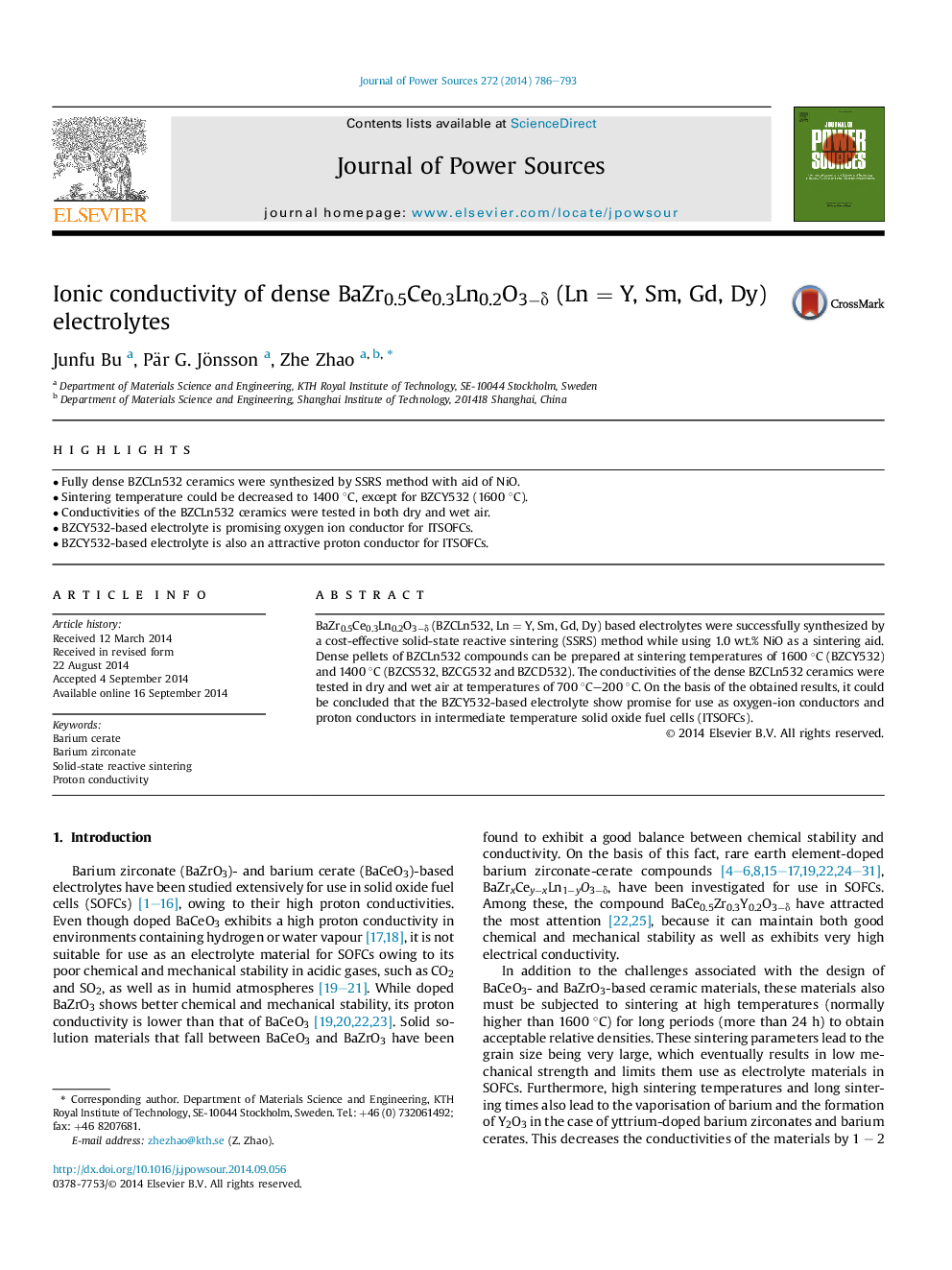| Article ID | Journal | Published Year | Pages | File Type |
|---|---|---|---|---|
| 1283956 | Journal of Power Sources | 2014 | 8 Pages |
•Fully dense BZCLn532 ceramics were synthesized by SSRS method with aid of NiO.•Sintering temperature could be decreased to 1400 °C, except for BZCY532 (1600 °C).•Conductivities of the BZCLn532 ceramics were tested in both dry and wet air.•BZCY532-based electrolyte is promising oxygen ion conductor for ITSOFCs.•BZCY532-based electrolyte is also an attractive proton conductor for ITSOFCs.
BaZr0.5Ce0.3Ln0.2O3−δ (BZCLn532, Ln = Y, Sm, Gd, Dy) based electrolytes were successfully synthesized by a cost-effective solid-state reactive sintering (SSRS) method while using 1.0 wt.% NiO as a sintering aid. Dense pellets of BZCLn532 compounds can be prepared at sintering temperatures of 1600 °C (BZCY532) and 1400 °C (BZCS532, BZCG532 and BZCD532). The conductivities of the dense BZCLn532 ceramics were tested in dry and wet air at temperatures of 700 °C–200 °C. On the basis of the obtained results, it could be concluded that the BZCY532-based electrolyte show promise for use as oxygen-ion conductors and proton conductors in intermediate temperature solid oxide fuel cells (ITSOFCs).
